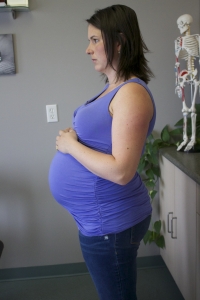Often pain with intimacy is brushed off “oh you’ve had kids”, “just relax”, “have a drink and you’ll be fine”. If you have heard this rhetoric be the one to stop the narrative! Here we go through a case study on dyspareunia after having kids!
Case Study PD
What does it feel like?
A mom of two comes into the clinic, we will refer to her as PD. She is anxious and unsure of what to expect for her first appointment, but she knows she can’t continue to live like this. PD says that she started having pain with intimacy (specifically with intercourse also known as dysparuenia) after she delivered her first baby. It wasn’t bad then, just some burning and pinching right at the opening. It wasn’t too painful and didn’t stick around but definitely wasn’t pleasant.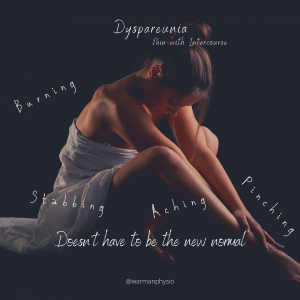
Since having her second more trouble with intimacy began. PD recalls having some tearing during delivery with her second but she didn’t need a referral. Her and her partner have tried multiple times to be intimate but she has 8/10 pain. Her pain now is a pulling, burning, pinching at the opening and she also experiences sharp pains deep in her belly as well. PD has pain that persists after attempts at intimacy and it seems to be taking longer before it goes away now. She tells the therapist that she continues to attempt to be intimate for her partner and to see if it still hurts.
This all-too-familiar story doesn’t just happen just for women who have had children vaginally, but can also occur for women who have had c-sections as well as women without children. Let’s focus on this case and some of the possible reasons WHY this happens, what we can do about it, and how you can start your road to recovery TODAY!
What Causes Pain with Intimacy?
There are many reasons why an individual may have pain during intimate encounters with their partner. In this instance PD is experiencing pain after child birth; which can be considered a trauma to the body. Since she had tearing during both her deliveries she will have scar tissue in the area that could be contributing. Couple this with the bodies natural response to pain (protect the area). The anticipation of pain causes the body to also move into a protective mode and it is a recipe for a pain cycle.
If you have pain with intercourse, a physiotherapy assessment could benefit you!
What does an assessment look like?
PD was seen for an assessment at the clinic where she was observed in how she moves generally through walking, squatting and bending movements. When evaluating her breathing PD had difficulty taking a deep breath down into the belly. The pelvic floor exam revealed a hypertonic/protective pelvic floor. At the time of the assessment she reported reproduction of “the pain”. The therapist was able to discontinue further evaluation while assisting PD in relaxing the muscles of the pelvic floor.
PD would be provided with a home program to improve deep breathing, pelvic floor muscle relaxation, and imagery/relaxation techniques to start. 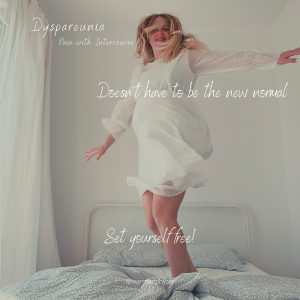
Over the course of the next 3 months PD attended appointments at the clinic. Starting with once every 7-14 days, to stretching out as her symptoms improved. PD was thrilled with her improvements and adjustments to the home program and in-person techniques were made. These adjustments included home exercises and activity, discussion on optimal positions, and internal techniques as PD’s pain improved. After 6 appointments she reported being pain-free except when she was very stressed, but manageable with her home program. PD was also happy that the program also seemed to help with her light bladder leakage, and tailbone pain!
How long until I am better?
The recovery period usually varies from client to client, depending on the severity and frequency symptoms. Other factors include:
- How long the pain has been present
- Activity level
- Ability to complete homework
Often with pelvic health issues resolution of straight forward cases occurs within 6-8 appointments. In some instances this could be shorter, and in others it could be longer.
Don’t delay! Schedule your assessment today to get started your journey to recovery!





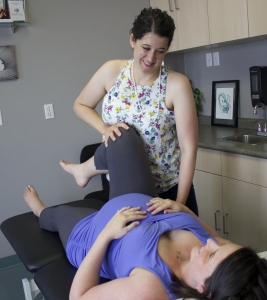

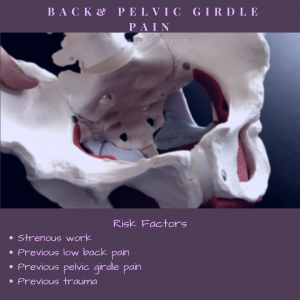 We wouldn’t tell someone who has just started running that has developed knee pain that “this is just part of becoming a runner – it will go away when you stop
We wouldn’t tell someone who has just started running that has developed knee pain that “this is just part of becoming a runner – it will go away when you stop